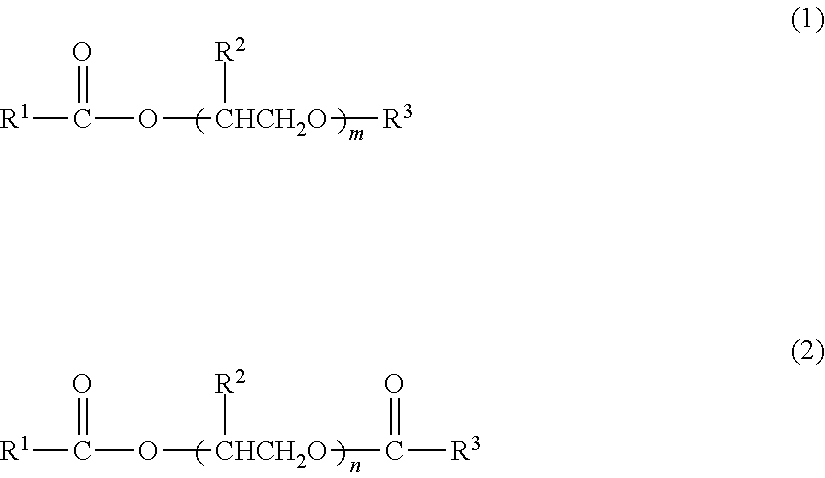Oil-based inkjet ink
- Summary
- Abstract
- Description
- Claims
- Application Information
AI Technical Summary
Benefits of technology
Problems solved by technology
Method used
Image
Examples
examples
Preparation of NAD 1
[0050]In a four-necked flask, 58 g of lauryl methacrylate (available from NOF Corporation), 14 g of dimethyl aminoethyl methacrylate (available from Wako Pure Chemical Industries, Ltd.), 14 g of glycidyl methacrylate (available from NOF Corporation), 42 g of 2-ethyl hexyl methacrylate (available from Wako Pure Chemical Industries, Ltd.), and 7 g of styrene macromer (available from TOAGOSEI Co., Ltd.) were mixed. Then, as a polymerization initiator, 1 g of V601 (available from Wako Pure Chemical Industries, Ltd.), 270 g of ININ (available from the Nisshin OilliO Group, Ltd.), 80 g of AF6 (AF SOLVENT NO. 6 available from JX Nippon Oil & Energy Corporation), 80 g of FOC 180 (FINE OXOCOL 180 available from Nissan Chemical Industries, Ltd.) were added, and the reaction was conducted for six hours under reflux at 80° C. to provide a solution of NAD 1.
Preparation of NAD 2
[0051]A solution of NAD 2 was provided in the same manner as the preparation of NAD 1, except that ...
PUM
 Login to View More
Login to View More Abstract
Description
Claims
Application Information
 Login to View More
Login to View More - R&D
- Intellectual Property
- Life Sciences
- Materials
- Tech Scout
- Unparalleled Data Quality
- Higher Quality Content
- 60% Fewer Hallucinations
Browse by: Latest US Patents, China's latest patents, Technical Efficacy Thesaurus, Application Domain, Technology Topic, Popular Technical Reports.
© 2025 PatSnap. All rights reserved.Legal|Privacy policy|Modern Slavery Act Transparency Statement|Sitemap|About US| Contact US: help@patsnap.com

